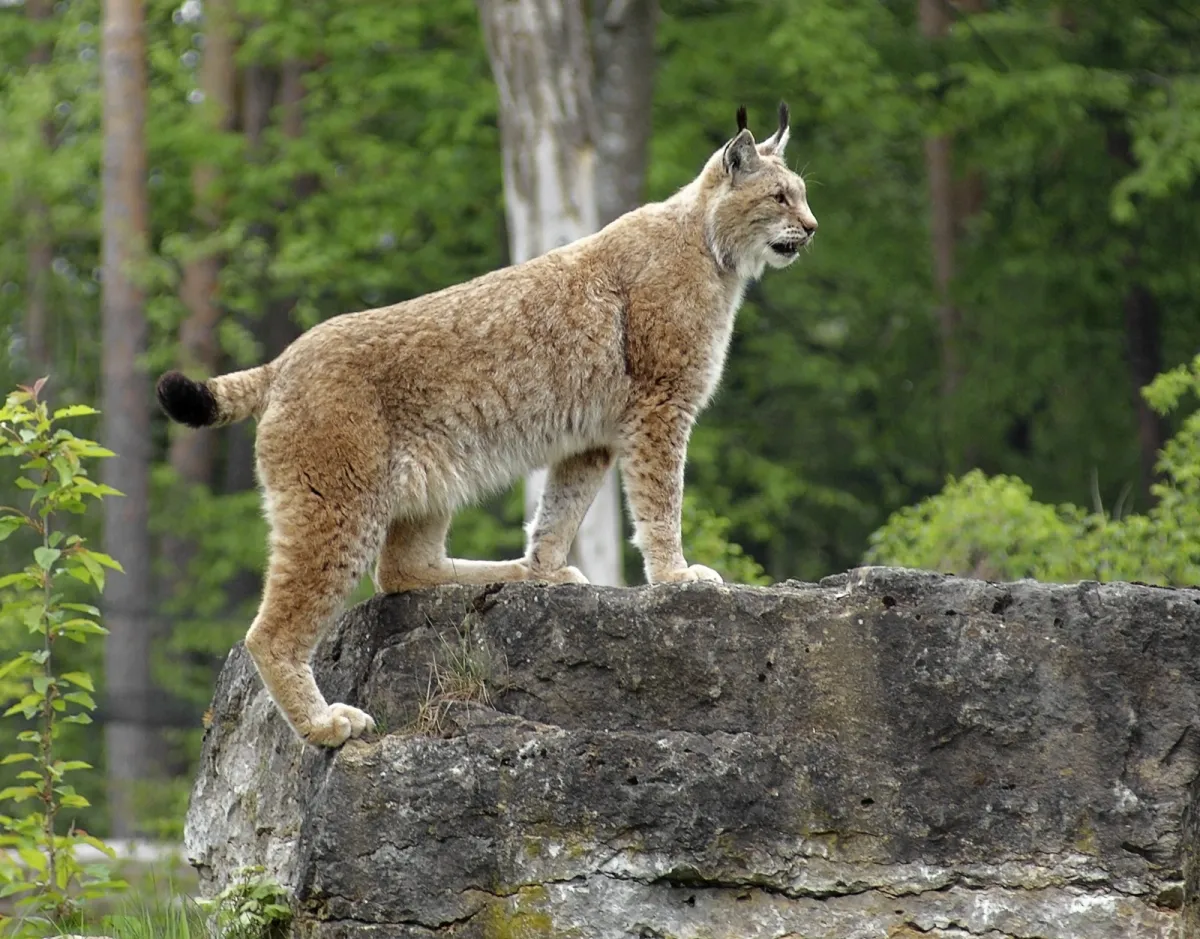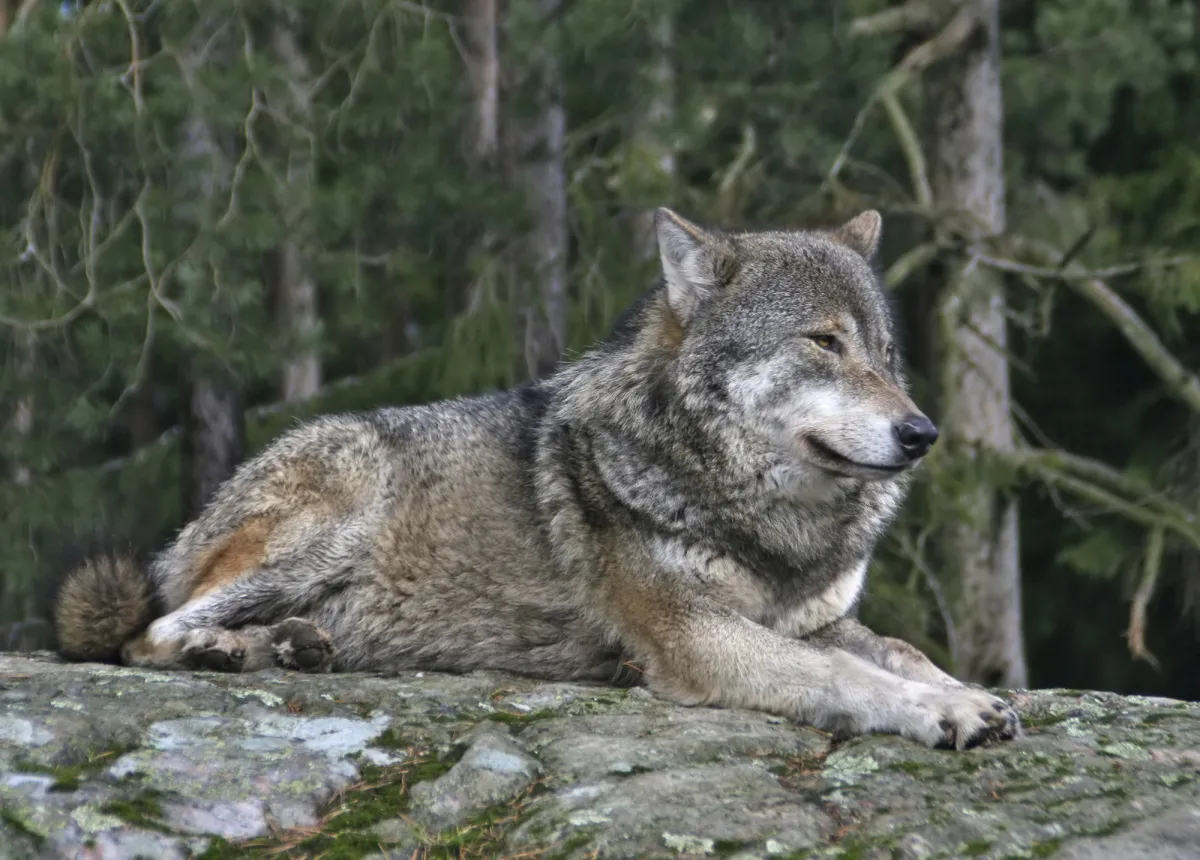The Lynx UK Trust plans to introduce up to six lynx later this year in each of Aberdeenshire, Ennerdale in the Lake District, and Thetford Forest in Norfolk.
The Trust was due to apply for licences in May and expected "a swift and positive response." It would then transport Eurasian lynx, mainly from Germany and Romania.
Lynx eat deer, rabbits and hares among other animals and the prospect of their reintroduction has been broadly welcomed by many environmentalists. "We are pretty confident the habitat and prey issues in England are not an issue," says Peter Watson, chief executive of the Deer Initiative. "The remaining problem is acceptability to both landowners and the general public."
Landowners and gamekeepers are less sure and the farming industry is wary. "We have some pretty searching questions," says Andrew Bauer, Deputy Director of Policy for the National Farmers Union Scotland. "There's a risk that species introduction gets made a fact on the ground before all the bureaucracy and proper assessment has been done. Springwatch then makes a programme, people get enamoured with them, and it is then a brave politician that moves to take them out."
The Lynx UK trust intends to introduce lynx of both sexes. Others are not so sure, and suggest the first lynx may be males. "That would give you an exit strategy. You won't have a breeding population until you are confident other issues are fine," says Watson. A lengthy consultation process - that also involves the public - will take place before Natural England and Scottish Natural Heritage decide whether to issue licences. Most observers doubt reintroduction will happen this year.
The Eurasian lynx is the largest lynx species, with powerful, long legs and large webbed and furred paws. One of the most successful of cats, the lynx was originally found from the UK to China though in modern times it has been greatly reduced in numbers in Western Europe, where populations are now mostly small and fragmented. In the UK the lynx was probably hunted to extinction for its fur between 500-700AD.

The advantages
1. Control of roe and other deer species
The Lynx UK Trust says lynx will help reduce numbers of roe deer and in Thetford, also predate non-native muntjac deer. "Lynx are major drivers of forest regeneration," says Dr Paul O'Donoghue, chief scientific advisor for the Trust. "The British countryside is dying, and the lynx will bring it back to life."
"There is public support, and there is an ecological need because of the role they fulfil in controlling roe deer," says Simon Jones, director of conservation, Scottish Wildlife Trust. "They are effectively a woodland restoration tool. There's a moral argument for reintroducing a species that we wiped out."
Deer may become increasingly nomadic, reducing their ability to breed. "The lynx may create a climate of fear so that you reduce the fecundity of the deer, their reproduction goes down because they are trying to survive," says Watson.
Mike Seville, Forest and Woodlands Adviser for the Country, Land and Business Association said: “We will be investigating the potential environmental benefits such as the possibility that they may play a part in reducing the Muntjac deer populations that are damaging our native woodlands."
2. A boost for tourism
"Economically it can be a big boost - by their nature these places are very remote, fragile economies and tourism is a lifeline," says Stuart Brooks, chief executive of the John Muir Trust.
"Lynx are proven drivers of rural regeneration," says O'Donoghue. "The first place to have lynx in the UK will make millions of pounds from tourism. People will be excited by their presence. I expect farmers to benefit the most."
3. Spectacle
"It would massively enhance the experience of being outdoors if some of these animals were reintroduced," says Brooks. "Even if you don't see them, just knowing they are there enhances our sense of wildness."
"The major benefit would be the notion that there is an apex predator that you might just catch a view of. The deer issue may not be the driving force," says Watson.
Disadvantages
1. Public safety
Due to the lynx's solitary and secretive nature, they do not present a threat to humans, says the Lynx UK Trust. "There's not a single documented case of lynx attacking humans," says O'Donoghue. "Lynx avoid people at all costs."
"Its an understandable fear, a question to ask," says Jones. "But the scientific evidence and experience is that it is highly likely few people will ever even see them. The experience from other countries is that there is no risk with lynx."
2. Threats to livestock and landowners' interests
Bauer feels that farmers are unlikely to be properly compensated. "We would be deeply sceptical of anyone saying lynx do not take sheep. But it's hard to prove every case where that happens. You don't always know how something dies and you can't be sure compensation schemes will continue in the same way in the future. People outside the farming community can also underestimate the emotional impact on farmers of losing an animal prematurely."
"You tend to have polarised opinions in the early days and there are real understandable concerns around how you manage lynx," says Jones.
"Farmers are worried about them taking sheep, but where they do take livestock on the continent, there are compensation schemes," says Watson.
3. Impact on birdlife
Seville raises "the negative impact they may have on other species particularly some of our rarer ground nesting birds. We will also want to investigate the likelihood of them predating on domestic livestock such as lambs and piglets."
"Pheasant shoots fear they may be affected," says Watson. "I don't see lynx taking pheasants but you could get disruption."
4. The right location?
"We have doubts over the sites and the scale of the landscapes in Scotland," says Jones. "The lynx is a challenging species to introduce because you should not underestimate the scale of the territory it needs. If you make the site too small you stack the odds of success against you."
Bauer questions how effective lynx will prove in Scotland. "Our deer are predominantly red, not roe, and live on open hillside," he says.
4. Road traffic accidents.
"There's a real possibility of more traffic accidents as roe deer will be more disturbed," says Watson.
5. Forced changes for farmers
Bauer believes the tourism benefits can be overplayed. "Some farmers may decide it is for them, but lynx are not something you will spot within five minutes of arriving at a farm. Many farmers will say 'I'm a sheep farmer, it's what I do, why should I have to diversify?' This has a lot to do with people's world view."
Could the lynx pave the way for other predators to be reintroduced?

YES:
Says the John Muir Trust, which has a vision for the rewilding of the countryside that means giving nature more space and includes the reintroduction of native mammals in the immediate, medium and distant future. "The beaver is at the immediate end of that spectrum and we believe that - within five years - there should be a credible trial reintroduction of the lynx," says Brooks. "That's both possible and desirable. Looking beyond that, wolves were an important part of our ecosystem and we believe could be again in the indeterminate future - though that would require public consultation and support. I hope we have matured enough to recognise that we are part of nature, not separate to it."
NO:
Says Peter Watson. "All the evidence elsewhere suggests that the fragmented nature of our habitats and the pressure of population are against it," says Watson. "It's almost impossible to see a situation where you could introduce bears or wolves in a truly wild environment. We've got the prey, but not the space. Wolves in the US have moved 500 miles - you would release them in Scotland and end up with them in London."
